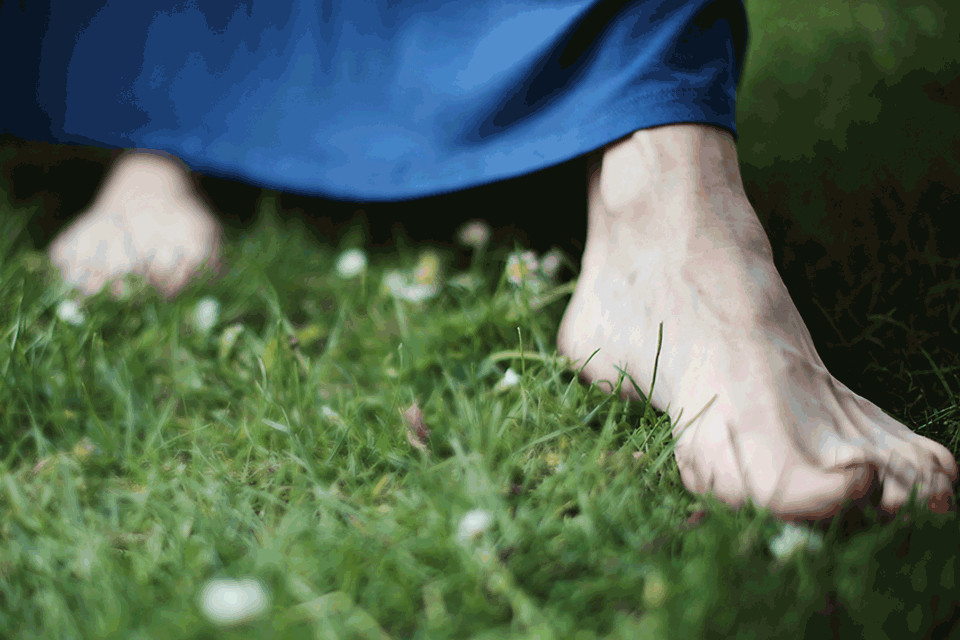by Jeannie Di Bon, February 19th, 2018

We spend a lot of time thinking about our bodies. For those who are lucky to live free from pain or conditions such as Ehlers-Danlos Syndrome (EDS), this often focuses our bodies look or the bits we’d like to tone or change. For those of us with hypermobility or EDS, the focus tends to be on how our joints feel, where the pain is, and how we avoid a dislocation or sprain. But what most of us never do is think about our body parts in isolation. The feet especially get very little attention.
Despite being one of the most significant parts of our bodies, our feet are often overlooked. Yet they play a huge role for those with hypermobility and EDS. These vital appendages impact the whole of our body. So when assessing how we can move more freely and easily, we should always start with the feet.
Why are the feet so important? For a start, each foot has 33 joints. That’s the same number as the spine! And whilst we tend to put a lot of thought into our spinal health and back-care, how our feet are supposed to feel or move is often poorly understood. Understanding how our feet connect with the ground, how they support our weight, how our gait impacts our hips and knees – all of this starts at ground level.
Many people with hypermobility have ‘flat feet’ (this is also sometimes referred to as collapsed arches or pronated feet). It means the muscles in the feet aren’t able to fully support our body weight and the multiple activities we do every day. The muscles in the feet are basically out of tone – like any other muscle in the body. Having flat feet can therefore mean that, instead of feeling the upward force of the ground when our feet make contact with the floor, they instead collapse into it. This can affect our gait and the pressure we put on the knee, hip and back muscles. In turn, this can cause pain and joint issues.
Just think about the famous Roman arches. When they crumble, the structure above them starts to fall about too. The arch is the foundation on which everything else rests.
It is therefore essential that we train and exercise the muscles of our feet just like we would any other muscle. We need to build a sense of the movement in the feet and their ability to offer a solid base of support and stability. Unless you feel supported when you stand, the rest of the body is forced to ‘hang on’ just to operate. You could end up working harder than you need to just to get around and cause yourself additional pain in the process. You will also use more vital energy, leading to fatigue.
Here are some small steps you can take to start thinking about your feet:
- Stand up and hold on to a solid surface like a sturdy chair or kitchen countertop.
- Try to raise your heels off the floor with control and slowly lower them back down. The control on way down is as important as going up.
- Aim to build up to ten repetitions every day.
- Try to keep the balls of your feet firmly on the ground whilst you raise your heels. This will build stability to forefoot, strengthen the arches and stabilise ligaments around the ankle.
- If you feel your ankle needs more support, place a small cushion between your ankles.
Try the above every day, if you can manage it, to start building up your foot strength. Small steps such as these can start you along the path to better stability, balance and movement.
3 Comments
Judy Pickett - 20th March 2018
I have had multiple foot, toe and ankle surgery. Including flat foot which was “repaired” (I thought) in 2016. I still have a brace in my ankle on that side which causes pain, and to add insult to injury I broke my great toe on that same foot in 2015. So, if I can say anything positive it would be that I can predict a cold front! But I have also gone up two sizes in shoes!
Susan - 8th March 2018
Good advice thanks…but my daughter also has POTS and CCI which will probably make this excercise difficult….would appreciate your comments…
Jeannie Di Bon - 16th April 2018
Thank you Susan. Please email me and we can chat in more detail at .